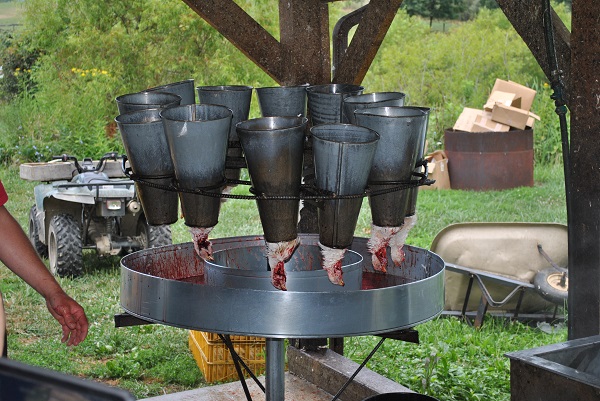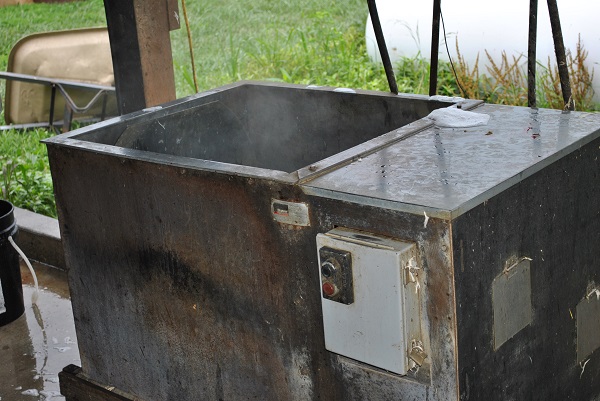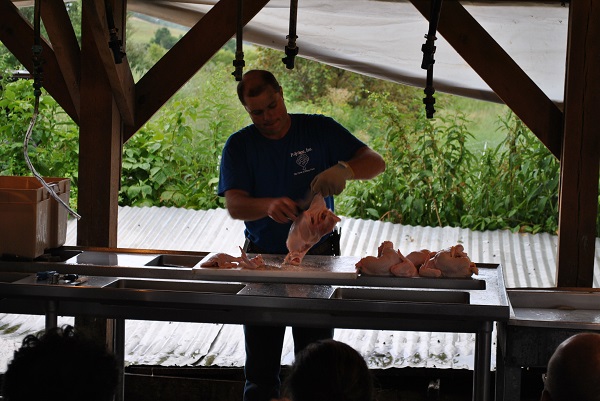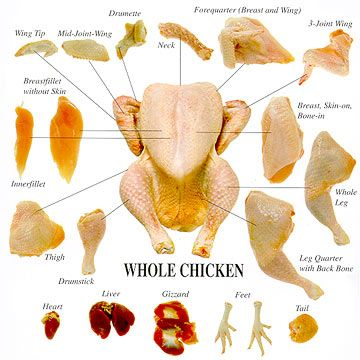
Cut-Whole Chicken
While attending the intensive seminars at Polyface Farm a few years ago, one of the sessions was on cutting up a whole chicken into parts. It’s amazing how many people don’t even know how to cut up a chicken. Today we will go over the process of this seemingly lost skill.
Enjoy,
David Proctor

Urban Farmer/Rancher
How To Butcher A Whole Chicken
by David Proctor
May 11, 2023
Urban Farm Lifestyle Magazine Published Weekly
When you shop at the grocery store you will see whole chickens, legs and thighs, breast meat, and chicken quarters.
Not a bad selection, but money can be saved by buying a whole chicken and cutting it up yourself.
At Polyface, they resisted for many years, selling cut birds.
They only sold whole birds.
They finally gave in to customer demands, but they charge extra for this convenience.

The next step is to remove the chickens from the shelter by grabbing them one at a time, then placing them in the kill cone.
The throats are slit so they can bleed out.

Next, the chickens are placed in the scalder.

This allows the feathers to be removed.
Then the chickens go into the plucker.

From the plucker, the chickens are now ready to be packaged or cut up into parts on the processing table.

Daniel Salatin gave a demonstration on cutting up a whole bird into packaging-size quantities.
Daniel’s concern was not the mass production of cutting many birds up into serving sizes but just one bird for your meal.

The principles are the same.
Step 1.
Lay the bird on its back. Wiggle or pull the wing to determine where the joint attaches to the breast. To separate the wing from the breast, use a sharp knife to cut through the ball joint where it meets the breast. Repeat with the other wing.
Step 2.
Pull a leg away from the body to see where it attaches. To remove the whole leg, first cut through the skin between the thigh and the breast.
Step 3.
Continue to pull on the leg and wiggle it a bit to determine where the thigh meets the socket in the back. Use a boning knife to cut through that joint. Repeat with the other leg.
Step 4.
Place each leg skin-side down. Flex to see where the ball joint between the drumstick and thigh is located. Look for the thin line of fat that was perpendicular to the body. Cut through the line of fat to separate the thigh and drumstick, wiggling or put tension to find where the joint is. Repeat with the other leg.
Step 5.
To remove the backbone, start at the head end of the bird and cut through the rib cage on the one side of the backbone with kitchen shears or a sharp knife. Repeat on the other side of the backbone to remove it completely.
Step 6.
To cut the breast into 2 halves, place it skin-side down, exposing the breastbone. Use a lot of pressure to cut through the breast bone, right down the center of the breast. Now you have two breast halves.

You now have eight pieces of chicken.
You can use the parts for stock, stews, frying, grilling, or baking.
Plus you have saved money and have the desired cuts of meat that you want.
Check It Out!
Quick Tip
A boning knife or pairing knife will give more mobility than a chef’s knife or cleaver.
Gordon Ramsay uses both Wüsthof and Henckels branded knives; his list of essential knives is; Chef’s knife for chopping.
Paring knife for peeling cutting small vegetables and fruit.
Boning knife with a somewhat flexible blade to cut around meat and bone.

Bibliography:
Roszmann Updated February 21, Rachel, and Rachel Roszmann. “How to Cut Up a Whole Chicken.” EatingWell, 11 May 2023, www.eatingwell.com/article/15522/how-to-cut-up-a-whole-chicken/.
Siracusa, John. “Gordon Ramsay Knife – What Knives Does He Use? (2020).” Hell’s Kitchen, Hell’s Kitchen, 11 May 2023, hellskitchenrecipes.com/gordon-ramsay-knives/.

Recent Comments